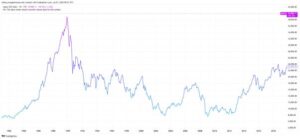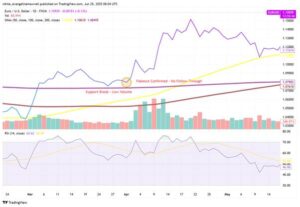On Tuesday, the U.S. dollar held firm after surging on news that the United States and China had agreed to a temporary reduction of mutual tariffs. The agreement, which spans 90 days, is widely seen as a welcome pause in a prolonged trade dispute that had raised global recession fears.
Markets responded positively, with risk assets rallying across the board. The dollar gained strength, reflecting increased investor confidence and reduced expectations for near-term Federal Reserve rate cuts.
Against major currencies, the dollar posted solid gains. It climbed 2.1% against the yen and 1.6% versus the Swiss franc on Monday, before easing slightly. On Tuesday, it stood at 148.29 yen and 0.8448 francs. The euro recovered marginally to $1.1095 after a sharp 1.4% drop the previous session.
The dollar index hovered near a one-month high at 101.67, supported by a pullback in Fed rate cut bets. Investors now see less urgency for monetary easing as trade tensions temporarily subside.
Treasury yields mirrored the optimism. The 2-year yield held near a one-month high at 3.9977%, while the 10-year yield stood at 4.4551%. Futures indicate markets are now pricing in only about 56 basis points of cuts from the Fed by the end of the year.
Other currencies were mixed. The British pound was steady at $1.3178. The Australian dollar edged up to $0.6374 but remained close to a two-week low. The New Zealand dollar rose to $0.5862 but stayed near a one-month trough.
Some traders suggest that despite the strong initial reaction, further weakness in the euro and yen could emerge in the coming weeks. The dollar’s strength, supported by rising yields and a more hawkish Fed stance, may persist, especially if the current trade truce holds.
Overall, the dollar’s rebound appears durable, driven by a combination of improved global risk appetite, diminished Fed cut expectations, and favorable yield differentials. However, with no long-term trade deal yet in place, market volatility is likely to continue.





